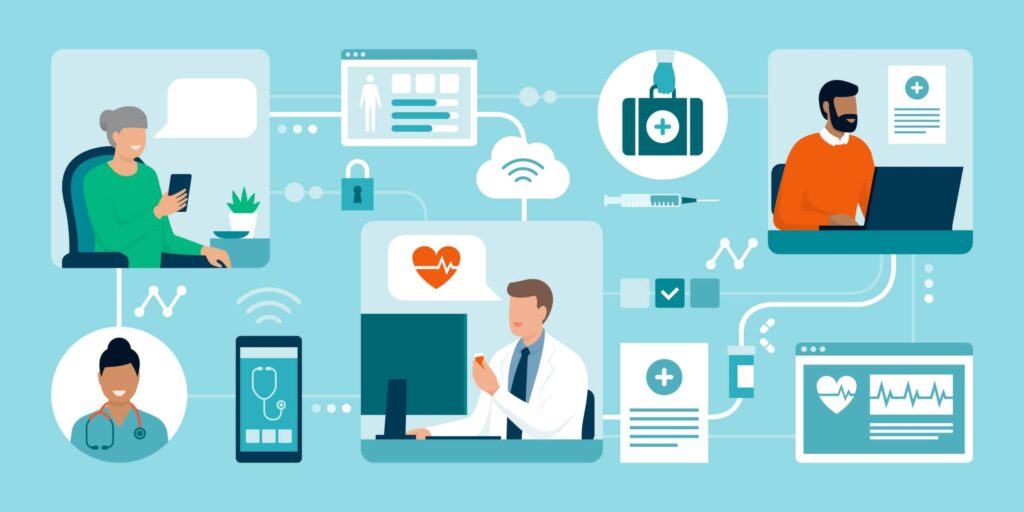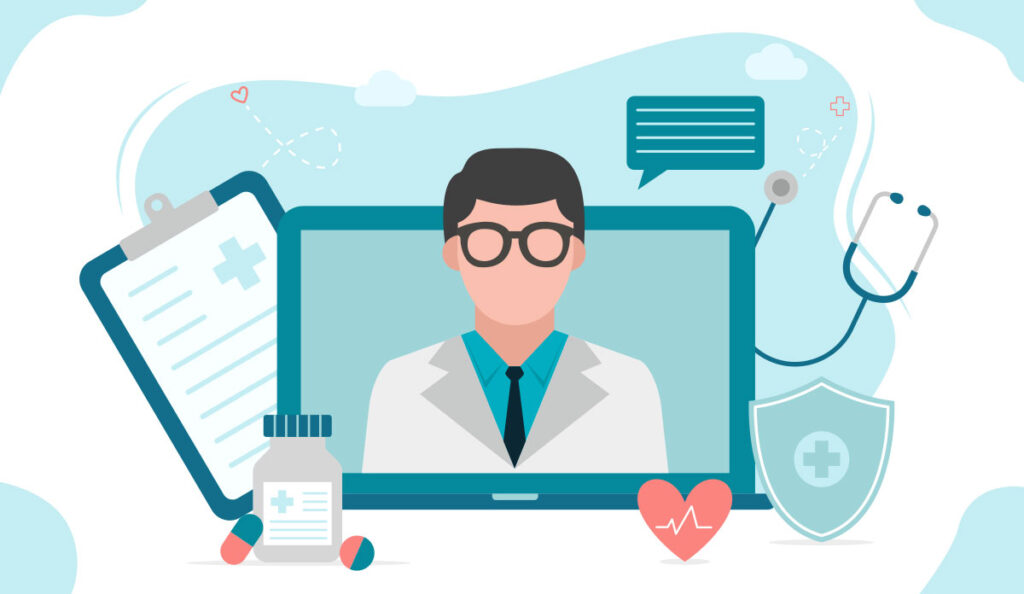Blog
How Telehealth Devices Are Bringing Medical Care to You
The healthcare landscape has undergone a dramatic transformation with the rise of telehealth devices. These innovative tools bring medical care directly to your home, making healthcare more accessible, convenient, and personalized than ever before. From wearable devices to home diagnostic tools, telehealth technology empowers individuals to manage their health and communicate with healthcare professionals without the need for frequent in-person visits.
In this article, we’ll explore how telehealth devices are reshaping the healthcare experience, their benefits, and how they’re revolutionizing patient care.
1. What Are Telehealth Devices?
Telehealth devices are technological tools designed to monitor, diagnose, and manage health conditions remotely. They work by collecting data on vital health metrics and transmitting this information to healthcare providers for review and analysis. These devices are integral to telemedicine platforms, enabling virtual consultations and remote patient monitoring.

Common Telehealth Devices:
- Wearable Health Monitors: Track metrics like heart rate, blood pressure, and sleep patterns.
- Diagnostic Tools: Devices like pulse oximeters, glucose monitors, and home ECGs.
- Remote Monitoring Systems: Tools that transmit real-time health data to doctors.
- Telemedicine Kits: Comprehensive kits with cameras, scopes, and sensors for virtual consultations.
2. How Telehealth Devices Work
Telehealth devices use advanced sensors, wireless connectivity, and data-sharing technologies to streamline healthcare delivery. Here’s how they typically operate:
1. Data Collection:
Devices collect health metrics such as heart rate, oxygen levels, blood pressure, and more using built-in sensors.
2. Data Transmission:
Collected data is securely transmitted to healthcare providers via Wi-Fi, Bluetooth, or cellular networks.
3. Analysis and Feedback:
Doctors analyze the data in real-time or over time and provide feedback, diagnosis, or treatment recommendations.
4. Integration with Telemedicine Platforms:
Devices sync with telemedicine apps, allowing for seamless communication between patients and providers.
3. The Role of Telehealth Devices in Modern Healthcare
Telehealth devices are revolutionizing healthcare by offering solutions that address the challenges of traditional medical care.
1. Remote Patient Monitoring (RPM):
RPM devices allow doctors to monitor chronic conditions like diabetes, hypertension, and heart disease remotely.
- Example: A continuous glucose monitor (CGM) tracks blood sugar levels and alerts doctors of irregularities.
2. Chronic Disease Management:
Patients with long-term illnesses can track their condition and share data with healthcare providers for timely interventions.
- Example: Blood pressure monitors help patients manage hypertension by providing daily readings.
3. Post-Surgery Care:
Devices enable doctors to monitor recovery progress without requiring frequent hospital visits.
- Example: Wearable health trackers measure activity levels and vital signs during recovery.
4. Emergency Alerts:
Certain telehealth devices can detect emergencies, such as falls or abnormal heart rhythms, and notify caregivers or emergency services.
- Example: Smartwatches with ECG capabilities send alerts for atrial fibrillation.
4. Benefits of Telehealth Devices
The adoption of telehealth devices has brought numerous advantages for both patients and healthcare providers.
1. Improved Accessibility:
- Rural and underserved areas benefit from remote access to healthcare professionals.
- Eliminates the need for transportation to clinics or hospitals.
2. Convenience and Comfort:
- Patients can monitor health metrics from the comfort of their homes.
- Reduces waiting times and in-person appointments.
3. Early Detection and Prevention:
- Devices provide real-time data, allowing for early detection of health issues.
- Prevents complications by promoting proactive care.
4. Cost-Effective Healthcare:
- Minimizes hospital admissions and emergency visits.
- Reduces costs associated with travel and repeated consultations.
5. Personalized Health Management:
- Offers insights tailored to individual health profiles.
- Encourages patients to take an active role in managing their health.
5. Popular Telehealth Devices
Here are some of the most widely used telehealth devices that are transforming healthcare delivery:
1. Smart Blood Pressure Monitors
- Features: Wireless connectivity, real-time data sharing, and multi-user profiles.
- Example: Omron Evolv, QardioArm.
2. Wearable ECG Monitors
- Features: Detect arrhythmias and track heart health.
- Example: KardiaMobile 6L, Apple Watch Series 9.
3. Continuous Glucose Monitors (CGMs)
- Features: Real-time glucose tracking for diabetes management.
- Example: Dexcom G7, Freestyle Libre 3.
4. Pulse Oximeters
- Features: Measure blood oxygen levels and respiratory rate.
- Example: Wellue O2Ring, Masimo MightySat.
5. Telemedicine Kits
- Features: Include digital stethoscopes, otoscopes, and cameras for virtual exams.
- Example: TytoCare Telemedicine Kit.
6. Smart Thermometers
- Features: Contactless readings and fever tracking.
- Example: Kinsa Smart Thermometer, Withings Thermo.
6. How Telehealth Devices Are Transforming Patient Care
Telehealth devices are addressing longstanding challenges in healthcare and paving the way for innovative care models.

1. Bridging the Gap for Rural Communities:
Telehealth devices provide rural populations with access to specialists and advanced diagnostics that may otherwise be unavailable locally.
2. Enhancing Chronic Care Management:
Chronic disease patients benefit from continuous monitoring and timely interventions, reducing complications and hospitalizations.
3. Promoting Preventive Healthcare:
Regular monitoring with telehealth devices encourages early detection and prevention of conditions like hypertension, diabetes, and heart disease.
4. Supporting Aging Populations:
For seniors, telehealth devices like fall detection monitors and wearable trackers enable safe, independent living while keeping caregivers informed.
5. Streamlining Emergency Responses:
Devices equipped with emergency alerts can notify healthcare providers or emergency services, ensuring quick action during critical situations.
7. Challenges of Telehealth Devices
While telehealth devices are transformative, they are not without challenges:
1. Data Privacy and Security:
- Sensitive health data must be protected to prevent breaches.
- Users should ensure their devices comply with HIPAA or equivalent standards.
2. Device Accuracy:
- Some consumer-grade devices may lack the accuracy of clinical tools.
- Regular calibration and validation are essential.
3. Digital Literacy:
- Patients unfamiliar with technology may face challenges in using devices.
- Comprehensive instructions and support can mitigate this issue.
4. Cost Barriers:
- High-quality telehealth devices can be expensive.
- Insurance coverage for telehealth tools varies.
8. Future of Telehealth Devices
The future of telehealth devices is promising, with continuous advancements making these tools more accessible and effective.
Emerging Trends:
- AI Integration: Enhanced diagnostics and predictive analytics for better care.
- Wearable Biosensors: Devices capable of tracking multiple metrics simultaneously.
- Telehealth Ecosystems: Seamless integration of devices with telemedicine platforms and electronic health records.
- Increased Affordability: Wider adoption and competition may lower costs over time.
These innovations will make telehealth devices even more valuable in delivering personalized and efficient healthcare.
9. Tips for Choosing the Right Telehealth Devices
To maximize the benefits of telehealth devices, consider the following:
- Identify Your Needs: Determine what health metrics you need to monitor.
- Check Compatibility: Ensure the device syncs with your smartphone or preferred app.
- Evaluate Accuracy: Look for devices with clinical validation or medical-grade accuracy.
- Review Data Privacy: Confirm that the device complies with data security regulations.
- Seek Professional Advice: Consult your healthcare provider for recommendations.
Conclusion
Telehealth devices are revolutionizing how healthcare is delivered, making it more accessible, efficient, and patient-centric. By enabling remote monitoring, early detection, and seamless communication with healthcare providers, these tools are empowering individuals to take control of their health.
Whether you’re managing a chronic condition, monitoring vital signs, or seeking preventive care, telehealth devices offer unparalleled convenience and support. As technology continues to evolve, these devices will play an even greater role in shaping the future of healthcare, bringing quality medical care directly to you.

